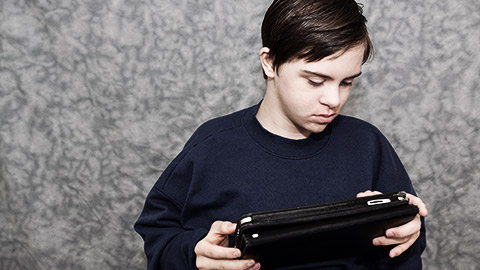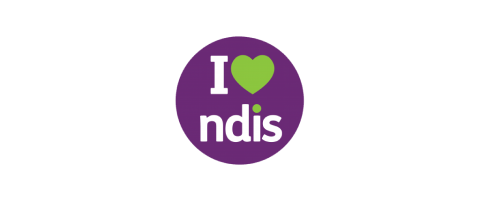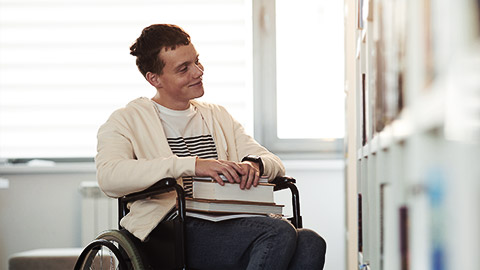In this topic, we will explore strategies for ongoing skills development which will include reading and interpreting individual plans. Various strategies in skills development, communication and consultation strategies, tools equipment and resources and teaching and learning strategies to support and create independence for people with disabilities. By the end of this topic, you will understand:
- Strategies to interpret individual plan
- Strategies for ongoing skills development and their use
- Communication, consultation and teaching and assessment strategies
- Tools, resources and equipment to support independence for people with disabilities
- Various services available for people with disability
- Informal learning strategies.

Earlier we learnt about the skills assessment processes and contributing to skills development. We will now look at information in individual plan which serves as a roadmap for coordinating and delivering services, supports, and interventions tailored to the unique needs and aspirations of the individual.
Skills development must be based on the person’s individualised plan, as part of the strengths-based and person-centred approach (What are the person’s goals, needs, and preferences? What can they do?), to plan and implement strategies and activities that are most suited to the person, and at the same time strategies and activities that the person will find most meaningful.
Strategies to interpret individual plan:
The individual plan includes person Cenetred Approach in support services A person-centred approach acknowledges the person as the expert on their life and needs. It is an empowering approach that strives to support the person in making choices and exercising control over their life. The person-centred approach also considers:
- the person's age and gender
- their ethnicity and culture
- their beliefs and identity (e.g., their sexual orientation and religious views).
Additionally, the person-centred approach includes the client's family and other supporters in their treatment plan. For example, if the client has a good relationship with their family or has a partner, they might choose to bring them to appointments.
Family members, partners, carers, and other support people can:
- offer insights into the client's biggest areas of need and treatment strategies that might be most effective.
- provide emotional support.
- point out what is most important to the person. For example, a support worker might be hyper-focusing on the skills of daily living but the family shares that their loved one has expressed a great desire to find an appropriate community singing class.
- provide information and insights that can help to more clearly identify the needs, concerns, and goals of the person.
This will help you know what their priorities are and helps you to collaborate on the actions that can be taken to meet their goals. Some questions you could ask the person and their family, partner, carer or support people include:
- What are your biggest challenges right now?
- How would reducing these challenges change your daily life? How would it feel to not have to deal with these challenges?
- What are you good at?
- What do you most enjoy about your life?
- What do you most dislike?
- What are your hopes for the next 6-12 months?
- What support would make your life easier?
- What support or activities would bring you more happiness or peace?
Strength-based practice in Skills Development
Philosophy
The underlying philosophy of strengths-based practice is rooted in the belief that individuals have inherent strengths, capabilities, and resources that can be harnessed to overcome challenges and achieve success. It focuses on empowering individuals, promoting their autonomy, and fostering a positive self-perception. Strengths-based practice is an approach that focuses on identifying and building upon an individual's strengths, abilities, and positive attributes. It emphasizes the unique talents and capabilities of individuals, shifting the focus from deficits to strengths, and promoting their overall development and well-being.
Current Practices
In contemporary disability support, there is a shift towards adopting a strengths-based approach to skills development. This approach focuses on recognizing and leveraging the unique strengths, talents, and abilities of individuals with disabilities.
Several current practices align with this approach:
- Individualised skills assessment
- Personalised learning plans
- Targetted skills building intervention
- Mentorship or coaching programs
- incorporating strengths-based approaches in educational or vocational settings
Positive behaviour support in Skills development
Philosophy
The philosophy that underpins positive behavior support in relation to disability is based on the belief that challenging behaviors are a form of communication, often arising due to unmet needs or skill deficits. It emphasizes the importance of treating individuals with dignity and respect, promoting their autonomy and self-determination, and focusing on their strengths and abilities. The philosophy recognizes that behavior change is most effective when it is approached with a positive, proactive, and person-centered mindset.
Current practices associated with positive behavior
Some current practices associated with positive behavior support in relation to disability include:
- Functional Behavior Assessment (FBA): Conducting a thorough assessment to understand the purpose or function of challenging behaviors and identifying factors that contribute to their occurrence.
- Person-Centered Planning: Collaboratively developing strategies and interventions that are tailored to the individual's specific needs, preferences, and strengths.
- Skill Development: Teaching individuals alternative skills and behaviors to replace challenging behaviors, focusing on building their strengths and abilities.
- Environmental Modifications: Modifying the physical and social environment to reduce triggers for challenging behaviors and promote positive behavior choices.
- Collaborative Teamwork: Involving a multidisciplinary team, including the individual, their family, caregivers, and professionals, to create a comprehensive and coordinated support plan.
Theories relevant to Positive Behaviour Support
- Applied Behavior Analysis (ABA): ABA is a theory that examines how behaviors are learned and can be modified through systematic interventions. It provides a framework for identifying and reinforcing desired skills and behaviors, promoting their development and maintenance.
- Social Learning Theory: Social Learning Theory emphasizes the role of observation, modeling, and social interaction in learning and behavior change. It highlights the importance of positive role models and supportive environments in facilitating the acquisition of new skills and behaviors.
- Strengths-Based Approaches: Strengths-based approaches, as mentioned earlier, focus on identifying and leveraging an individual's strengths, interests, and abilities.
- By building upon these strengths, Positive Behaviour Support interventions can promote the development of alternative skills and positive behaviors while reducing the occurrence of challenging behaviors.
- Cognitive-Behavioral Theory: Cognitive-Behavioral Theory explores the relationship between thoughts, feelings, and behaviors. It recognizes the role of cognitive processes in influencing behavior and emphasizes the importance of addressing maladaptive thoughts and beliefs while promoting positive thinking and adaptive behaviors.
Active Support approach
Philosophy
The underpinning philosophy of Active Support in relation to skills-based development using a strengths-based approach is centered around the principles of empowerment, inclusion, and person-centeredness. Active Support emphasizes the belief that individuals with disabilities have inherent strengths, abilities, and potential for growth. It recognizes that skills development is best achieved by focusing on the individual's existing strengths and building upon them. This strengths-based approach acknowledges that everyone has unique talents and capabilities, and seeks to leverage those strengths to enhance skill acquisition and promote overall well-being.
Current practices associated with Active Support:
Designing and implementing a structured routine of activities that offer meaningful opportunities for individuals to engage in tasks and develop skills. This practice aligns with skills development using a strengths-based approach by providing individuals with consistent and structured opportunities to practice and enhance their existing skills while also discovering and developing new strengths and abilities.
Breaking down complex activities into smaller, manageable steps to facilitate skill development and ensure individuals can actively participate at their own pace. Task analysis supports skills development by focusing on incremental progress and providing individuals with clear and achievable steps to develop their skills. It allows for a strengths-based approach by identifying and leveraging the individual's existing strengths and abilities within each step of the task.
Collaboratively developing personalized plans that reflect the individual's goals, preferences, and strengths, and incorporating these plans into their daily activities and support. Person-centred planning ensures that skills development aligns with the individual's specific needs, interests, and aspirations. By incorporating the individual's strengths and preferences into the planning process, it promotes a strengths-based approach to skills development and empowers the individual to actively engage in activities that align with their abilities and goals.
Providing training and ongoing support to staff members to enhance their skills and understanding of Active Support principles, ensuring consistent implementation. Staff training and support are crucial for implementing Active Support effectively and in line with a strengths-based approach. It equips staff members with the necessary knowledge and skills to identify and build upon the strengths and abilities of individuals with disabilities, promoting their skills development and overall well-being.
Making adaptations to the physical environment to enable individuals to access and engage in activities more independently and comfortably. Environmental modifications remove barriers and create a supportive environment that fosters skills development. By optimizing the physical environment, individuals can utilize their strengths and abilities more effectively, promoting their skill development and enhancing their overall engagement and participation.
Active support theories relevant to skills development
Some theories relevant to skills development using a strengths-based approach in relation to disability within Active Support include:
- Social Role Valorization (SRV): SRV theory emphasizes the importance of supporting individuals with disabilities to assume valued social roles and participate actively in their communities. It focuses on enhancing their skills and abilities to promote their inclusion and social contribution.
- Self-Determination Theory: Self-Determination Theory highlights the importance of autonomy, competence, and relatedness in promoting individuals' intrinsic motivation and personal growth. Applying this theory in skills development within Active Support involves supporting individuals with disabilities to make choices, set goals, and actively participate in activities based on their interests and abilities.
- Ecological Systems Theory: Ecological Systems Theory recognizes the impact of various environmental systems on individuals' development. In the context of Active Support, it emphasizes the need to create supportive environments that facilitate skill development, independence, and community participation for individuals with disabilities.
By incorporating these theories into practice, Active Support promotes skills development, fosters independence, and enhances the overall well-being of individuals with disabilities using a strengths-based approach.
Communication Strategies

Each person's communication needs are unique, and tailoring approaches to their specific requirements will help promote effective and meaningful communication. it's essential to involve the individual and their support network in the process of identifying and implementing communication strategies and resources When considering communication needs strategies and resources for a person with disability it's essential to adopt a person-centered approach that takes into account the individual's specific abilities, preferences, and requirements. Here are some strategies and resources that can support effective communication for individuals with disabilities:
- Augmentative and Alternative Communication (AAC) Systems: These systems include tools and techniques that support or replace speech for individuals with communication challenges. Examples include communication boards, picture exchange communication systems (PECS), sign language, and electronic devices with text-to-speech capabilities.
- Visual Supports: Visual aids can be highly beneficial for individuals with disabilities, particularly those with autism spectrum disorders or cognitive impairments. Visual schedules, social stories, visual cues, and visual timetables help provide structure, support comprehension, and facilitate communication.
- Assistive Technology: Various assistive technology devices and software can enhance communication for individuals with disabilities. Examples include communication apps, speech-generating devices, text-to-speech programs, and eye-tracking devices that allow individuals to communicate through eye movements.
- Adaptive Communication Strategies: Employing adaptive strategies involves modifying communication techniques to suit the individual's specific needs. This may involve using simplified language, providing additional processing time, using visual aids alongside verbal instructions, or utilizing gestures and body language to enhance understanding.
- Communication Partner Training: Educating and training communication partners, including family members, friends, caregivers, and professionals, is crucial for effective communication with individuals with disabilities. This training can focus on techniques such as using clear and simple language, maintaining eye contact, active listening, and providing wait time for responses.
- Accessible Environments: Creating environments that are accessible and inclusive promotes effective communication. This includes ensuring physical accessibility (e.g., ramps, wide doorways), sensory accommodations (e.g., reducing noise, providing visual and tactile supports), and considering environmental modifications to support communication needs.
- Professional Support: Collaborating with speech and language therapists, occupational therapists, or communication specialists can provide valuable expertise and guidance in developing personalized communication strategies. These professionals can assess individual needs, provide therapy or interventions, and offer ongoing support and training.
- Community Resources: Exploring community resources, support groups, and organizations focused on communication and disability can provide access to additional strategies, networking opportunities, and educational materials. These resources may include local disability service providers, advocacy groups, or online communities. Remember, it's essential to involve the individual and their support network in the process of identifying and implementing communication strategies and resources. Each person's communication needs are unique, and tailoring approaches to their specific requirements will help promote effective and meaningful communication.
Consultation strategies
When working with a person with a disability and others, effective consultation strategies are essential to ensure that all stakeholders are involved, their perspectives are considered, and collaborative decision-making takes place. Here are some consultation strategies to employ:
- Active Listening: Actively listen to the person with a disability, giving them ample time to express their thoughts, concerns, and preferences. Practice empathy and validate their experiences by showing understanding and respect.
- Respect for Autonomy: Recognize and respect the person's autonomy and decision-making capabilities. Involve them in the consultation process, ensuring their opinions and choices are valued and considered.
- Clear and Accessible Communication: Use clear and simple language when communicating, taking into account the person's communication needs and adapting communication methods as necessary. Provide visual supports or alternative formats when needed, ensuring information is accessible to all participants.
- Collaboration and Partnerships: Foster a collaborative approach by actively involving the person with a disability, their family, caregivers, and relevant professionals in the consultation process. Encourage open dialogue and create a supportive environment where everyone's input is valued.
- Flexible Meeting Formats: Consider the individual's accessibility needs and provide accommodations to ensure their full participation. This may include providing accessible meeting venues, using assistive technologies, or offering alternative communication methods.
- Individualized Support: Recognize that each person's disability is unique, and their consultation needs may differ. Tailor the consultation process to accommodate their specific requirements, taking into account their communication style, cognitive abilities, and any necessary adjustments.
- Educate and Inform: Provide relevant information about the consultation process, its purpose, and the expected outcomes. Offer explanations of any technical or complex terminology and ensure everyone involved has a clear understanding of the objectives and procedures.
- Feedback and Follow-up: Seek feedback from the person with a disability and others involved to evaluate the effectiveness of the consultation process. Follow up on any agreed-upon actions, ensuring that the individual's needs and preferences are addressed and respected.
By employing these consultation strategies, you can promote effective collaboration, inclusivity, and decision-making when working with a person with a disability and others. Remember that each individual's input is valuable, and a participatory approach can lead to better outcomes and increased satisfaction for everyone involved.

When selecting tools, equipment, and resources, it's important to consider the individual's specific needs, preferences, and abilities. Collaboration with professionals, such as occupational therapists or special educators, can help determine the most suitable tools and resources for supporting skill development in individuals with disabilities. When supporting skills development for people with disabilities, various tools, equipment, and resources can be used to enhance their learning and facilitate their progress. Here are some examples:
- Adaptive Learning Tools: These tools are designed to accommodate different learning styles and abilities. They may include adaptive keyboards, ergonomic writing aids, adapted scissors, or tools that assist with fine motor skills development. Modified Writing Tools: Grippers, adaptive pencils, or weighted pens can assist individuals with fine motor difficulties in writing and drawing. Tactile and Sensory Materials: Tactile materials, such as raised-line drawings, textured objects, or sensory toys, can enhance learning for individuals with visual impairments or sensory processing difficulties.
- Communication Aids: Augmentative and Alternative Communication (AAC) devices and software, such as communication boards, picture exchange communication systems (PECS), or speech-generating devices, can support individuals with communication difficulties in expressing themselves and participating in activities.
- Assistive Technology: Assistive technology devices can help individuals with disabilities access information, participate in activities, and develop various skills. Examples include screen readers, voice recognition software, specialized computer interfaces, or sensory devices for individuals with visual or hearing impairments.
- Sensory Tools and Equipment: For individuals with sensory processing difficulties, sensory tools and equipment can create a supportive learning environment. This may include sensory-friendly seating, noise-canceling headphones, fidget tools, weighted blankets, or sensory play materials.
- Visual Supports: Visual supports can aid in skill development and comprehension. These can include visual schedules, visual prompts, visual timers, visual aids for sequencing or organizing tasks, and visual cues that support communication or social interactions.
- Adaptive Physical Activity Equipment: Adapted equipment and assistive devices can promote physical skills development. Examples include modified sports equipment, adaptive bicycles, wheelchair-accessible play structures, or assistive devices for mobility.
- Task and Skill Development Apps: There are numerous educational apps and software available for tablets, smartphones, and computers that offer interactive and engaging activities to develop skills in various areas such as literacy, numeracy, communication, and cognitive skills.
- Sensory Integration Tools: Sensory integration tools aim to address sensory processing difficulties and promote self-regulation. These can include sensory swings, therapy balls, tactile stimulation tools, or sensory bins filled with different materials for tactile exploration.
- Social Skills Resources: Social skills development can be supported through resources such as social stories, social skills games, role-play materials, or videos demonstrating social interactions and communication.
- Visual and Tactile Learning Materials: Utilizing visual and tactile learning materials can enhance engagement and understanding for individuals with disabilities. This may include manipulatives, tactile books, Braille materials, or interactive learning resources that cater to various learning styles.

When working as a support worker with a person with a disability and supporting their participation in creative activities, it's essential to employ inclusive teaching and learning strategies. Here are some strategies you can apply:
- Person-Centered Approach: Take a person-centered approach by considering the individual's interests, abilities, and preferences when planning creative activities. Involve the person in decision-making and tailor the activities to their specific needs and goals.
- Clear Communication: Use clear and simple language when providing instructions and explanations. Break down complex tasks into smaller, manageable steps. Incorporate visual aids, gestures, and demonstrations to support understanding.
- Multi-Sensory Engagement: Incorporate multi-sensory elements into creative activities to engage individuals with different sensory preferences. Use tactile materials, visual stimuli, and auditory cues to enhance the experience and make it more inclusive.
- Adaptation and Modification: Adapt and modify activities to accommodate the person's abilities and challenges. Provide assistive devices, adaptive tools, or modifications that enable active participation. Break tasks into smaller segments and offer additional support as needed.
- Positive Reinforcement: Use positive reinforcement to motivate and encourage the person's participation and efforts. Offer praise, rewards, and recognition for their achievements, progress, and creativity. Focus on strengths and celebrate individual successes.
- Collaboration and Group Activities: Foster a sense of community and inclusion by facilitating collaborative and group activities. Encourage interaction, cooperation, and shared experiences among participants with and without disabilities.
- Flexibility and Choice: Offer choices and options within creative activities, allowing individuals to select materials, techniques, or themes that resonate with their interests. Flexibility in adapting activities based on individual preferences and needs promotes a sense of ownership and empowerment.
- Breaks and Rest Periods: Recognize the importance of breaks and rest periods during creative activities. Provide opportunities for individuals to take breaks, recharge, and manage fatigue. Respect their energy levels and pacing to maintain a positive and enjoyable experience.
- Supportive Environment: Create a supportive and non-judgmental environment where individuals feel comfortable expressing themselves creatively. Foster a culture of acceptance, respect, and diversity, valuing each person's unique contributions.
- Skill Building and Progression: Provide opportunities for skill building and progression in creative activities. Offer a range of activities that gradually challenge and expand the person's abilities, allowing them to develop new skills and build confidence over time.
- Reflection and Feedback: Encourage reflection and self-evaluation by asking individuals to share their thoughts and feelings about their creative experiences. Offer constructive feedback and guidance to support their growth and learning.
- Collaboration with Professionals: Collaborate with professionals such as art therapists, occupational therapists, or disability support workers to gain insights, strategies, and expertise in facilitating creative activities for individuals with disabilities.
Remember, it's important to continuously assess and adapt your teaching and learning strategies based on the individual's progress, feedback, and evolving needs. By fostering a supportive and inclusive environment, you can help individuals with disabilities fully participate and benefit from creative activities, promoting their personal growth, self-expression, and enjoyment.
Informal Learning Opportunities
When supporting a person with a disability in participating in activities, identifying and maximizing informal learning opportunities can greatly enhance their learning and development. Here are strategies to help identify and make the most of these opportunities:
- Observation and Assessment: Observe the person's interactions, behaviors, and interests during activities. Pay attention to their natural curiosity, engagement, and areas of strength. This will help identify informal learning opportunities that align with their individual preferences and abilities.
- Flexible Planning: Maintain a flexible approach to activity planning, allowing room for spontaneous learning opportunities to emerge. Be open to adjusting the activity based on the person's interests, questions, or unexpected discoveries during the process.
- Seize Teachable Moments: Take advantage of unplanned moments or situations that present learning opportunities. For example, if the person with a disability encounters a problem or challenge during an activity, use it as a chance to problem-solve together and foster critical thinking skills.
- Prompting and Questioning: Prompt the person with open-ended questions to encourage reflection, curiosity, and deeper thinking. Ask questions that encourage them to explore their experiences, make connections, and share their thoughts and insights.
- Reinforcement and Positive Feedback: Provide reinforcement and positive feedback when the person demonstrates learning or achieves a goal. Acknowledge their effort, progress, and specific skills they have acquired or developed informally. This encourages further engagement and motivation.
- Peer Interaction: Facilitate opportunities for the person with a disability to interact with peers during activities. Peer interactions can foster social learning, communication skills, and the exchange of knowledge and experiences.
- Encourage Exploration and Experimentation: Create a safe and supportive environment that encourages the person to explore, experiment, and take risks. Provide materials, resources, and opportunities for hands-on exploration and creative expression.
- Community Engagement: Connect the person with disability to the local community and encourage participation in community-based activities. Community settings provide rich informal learning opportunities, such as engaging with diverse people, exploring local resources, and experiencing real-life situations.
- Reflection and Documentation: Encourage the person to reflect on their learning experiences and document their insights, discoveries, and achievements. This can be done through journals, photographs, videos, or other means of personal expression. Reflecting on experiences helps consolidate learning and supports future growth.
- Collaborative Learning: Foster collaborative learning experiences by involving the person with a disability in group activities or projects. This promotes shared knowledge, cooperative problem-solving, and peer support, enhancing informal learning opportunities for all participants.
- Empower Self-Directed Learning: Support the person in taking ownership of their learning journey by empowering them to identify their interests and set goals. Encourage self-directed exploration, research, and independent learning outside of structured activities.
- Continuous Learning Environment: Maintain a continuous learning environment where learning is seen as an ongoing process. Emphasize that learning can occur in various settings and situations, not just in formal instructional settings.
By implementing these strategies, you can identify and maximize informal learning opportunities for a person with a disability, supporting their holistic development, fostering curiosity, and promoting lifelong learning.

In Australia, there are several services and resources available to support people with disabilities. Here are some key services and resources:
- National Disability Insurance Scheme (NDIS): The NDIS is a national scheme that provides funding and support for individuals with permanent and significant disabilities. It offers individualized support plans, funding for services and equipment, and access to a range of supports to enhance independence and participation.
- Disability Support Services: These services are provided by state and territory governments and aim to support individuals with disabilities in areas such as accommodation, community access, employment support, and respite care. These services vary by location and may include disability support organizations, disability advocacy groups, and government-funded programs.
- Disability Employment Services (DES): DES helps individuals with disabilities find and maintain employment. It offers a range of support services including job searching assistance, skills development, workplace modifications, and ongoing support in the workplace.
- Accessible Housing: Various housing options are available to accommodate the specific needs of people with disabilities. This includes accessible public housing, specialized disability accommodation, and support for home modifications to improve accessibility and independence.
- Assistive Technology: People with disabilities can access a range of assistive technology devices and equipment to assist with mobility, communication, daily living, and access to education or employment. This includes items such as wheelchairs, hearing aids, communication devices, and specialized computer software.
- Education and Training Support: Educational institutions provide a range of support services for students with disabilities, including learning accommodations, assistive technology, specialized teaching support, and individualized education plans. Vocational training and tertiary education institutions also offer support services to facilitate inclusive learning environments.
- Health and Therapy Services: Accessible healthcare services, including specialized disability services, are available to address the unique health needs of individuals with disabilities. This may include allied health services such as occupational therapy, physiotherapy, speech therapy, and specialized medical clinics.
- Support Coordination: Support coordination services help individuals navigate the disability support system, access appropriate services, and coordinate their supports effectively. Support coordinators assist with planning, linking to service providers, and ensuring that individuals receive the necessary support for their specific needs.
- Disability Rights and Advocacy: There are disability advocacy organizations that work to protect and promote the rights of individuals with disabilities. They provide information, support, and advocacy services to individuals with disabilities and their families, ensuring their voices are heard and their rights are upheld.
These are just some of the services and resources available to people with disabilities in Australia. The availability and specific details of these services may vary depending on the state or territory. It is advisable to contact local disability service providers or government agencies for more information and to access appropriate supports.

Creating independence for people with disabilities involves empowering them to develop skills, make choices, and participate fully in their daily lives. Here are some strategies to promote independence:
- Task Analysis and Instruction: Break down complex tasks into smaller steps, teach each step systematically, and provide opportunities for practice and mastery. Gradually reduce prompts as the individual becomes more proficient.
- Visual Supports: Use visual aids such as visual schedules, checklists, or visual prompts to provide cues and reminders. Visual supports can be especially helpful for individuals with cognitive or communication difficulties.
- Modeling: Demonstrate the desired behavior or task yourself, showing the individual how it is done. This can provide a clear example for imitation and learning.
- Gradual Release of Responsibility: Initially, provide more support and guidance during the learning process, and gradually shift responsibility to the individual. This allows for a smooth transition to independent performance.
Prompting and Fading
Prompting in a disability context refers to providing cues, reminders, or guidance to assist individuals with disabilities in completing a task or acquiring a skill. The purpose of prompting is to support individuals in learning and performing tasks successfully. It can be used across various domains, including communication, self-care, social interactions, and academic or vocational activities.
Principles of Prompting:
- Least to Most Intrusive: Start with the least intrusive prompts, such as gestures or verbal cues, and gradually increase the level of support if needed. This allows individuals to attempt the task independently before additional assistance is provided.
- Individualization: Tailor prompts to the specific needs and abilities of the individual. Different individuals may respond better to different types of prompts, so it is important to consider their learning style, preferences, and sensory needs.
- Task Analysis: Break down tasks into smaller, manageable steps to determine when and how prompts should be given. This helps identify the specific points where prompts will be most effective in supporting the individual's progress.
Fading Prompting:
Fading prompting involves gradually reducing or removing prompts over time to promote independence and skill mastery. The goal is to shift from external support to internal self-regulation. Fading prompts allows individuals to take increasing responsibility and ownership of their actions. The fading process should be gradual and individualized, considering the person's progress, confidence, and overall development.
Reinforcing Techniques
Reinforcement involves providing positive consequences to strengthen desired behaviors and increase the likelihood of their recurrence. Effective reinforcing techniques can include:
- Positive Reinforcement: Provide praise, encouragement, tokens, rewards, or privileges when individuals demonstrate desired behaviors or achieve specific goals. This reinforces their efforts and motivates continued engagement.
- Token Systems: Use a token economy system where individuals earn tokens or points for demonstrating desired behaviors. These tokens can be exchanged for preferred items, activities, or privileges.
- Natural Consequences: Allow individuals to experience the natural consequences of their actions. Positive outcomes resulting from their efforts can serve as intrinsic motivation to continue engaging in the desired behavior.
- Social Reinforcement: Use social interactions, such as verbal praise, high-fives, or a thumbs-up, to acknowledge and reinforce desired behaviors. Positive social attention can be a powerful motivator.
When and How to Use Reinforcing Techniques
Reinforcing techniques should be used consistently and immediately following the desired behavior to maximize their effectiveness. Reinforcement should be tailored to individual preferences and needs. It is important to use a variety of reinforcers and adapt them based on the individual's interests, age, and abilities. Additionally, gradually fade the use of external reinforcers as individuals become more intrinsically motivated and self-reliant.
Motivators, De-Motivators, and Blocks to Learning
Motivators are factors or incentives that encourage individuals to engage in learning and achieve their goals. They can be intrinsic (personal satisfaction, curiosity) or extrinsic (rewards, recognition). De-motivators, on the other hand, are factors that decrease motivation and hinder progress. These can include lack of interest, fear of failure, or negative experiences.
Blocks to learning are obstacles or barriers that impede individuals' progress and limit their ability to acquire new skills or knowledge. Examples of blocks to learning may include lack of accessible resources, limited opportunities for practice, negative attitudes or stereotypes, and a lack of appropriate support or accommodations.
Identifying and addressing motivators, de-motivators, and blocks to learning is crucial for creating an environment that supports independence.
By understanding what motivates individuals, removing barriers, and providing appropriate support, their engagement, learning, and independence can be enhanced.
